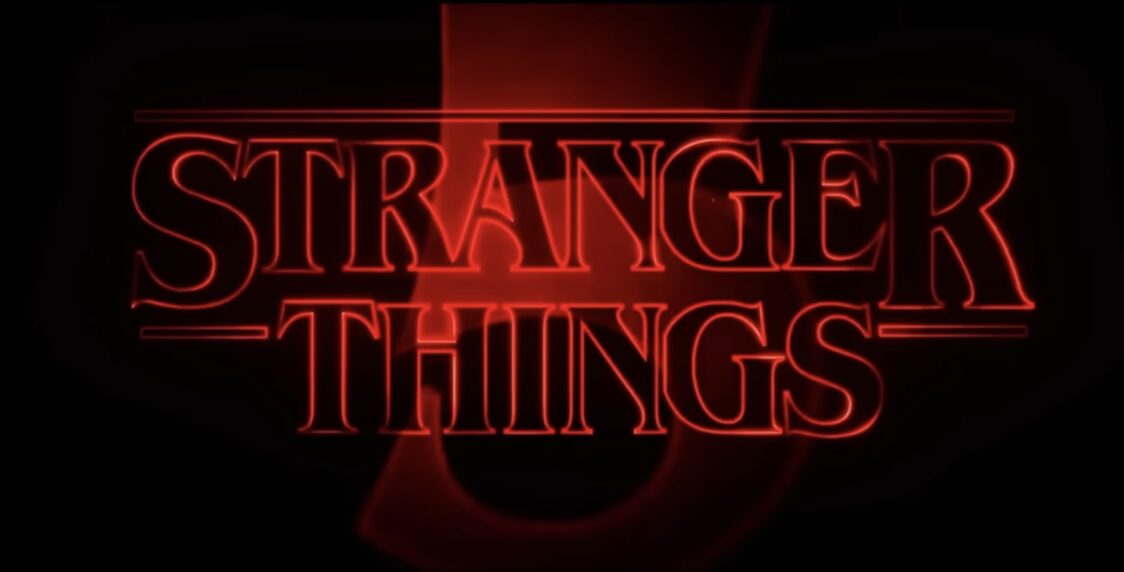
In today’s fast-paced digital age, storytelling has evolved beyond the boundaries of traditional mediums. Transmedia storytelling has emerged as a powerful and immersive way to engage audiences across multiple platforms, creating a cohesive and captivating narrative experience. By combining various media elements such as film, television, books, comics, games, and more, storytellers can transport their audiences into rich and expansive worlds. In this article, we will explore some fascinating examples of transmedia storytelling that have successfully captivated audiences and pushed the boundaries of narrative engagement.
“Stranger Things”: A Transmedia Phenomenon
One of the most notable examples of transmedia storytelling in recent years is the Netflix series “Stranger Things.” Set in the 1980s, this supernatural thriller has become a pop culture sensation, captivating audiences with its compelling story and nostalgic references. The creators of “Stranger Things” embraced transmedia storytelling by extending the narrative across various platforms, including books, comics, video games, and even virtual reality experiences.
Books and Comics: Expanding the Upside Down
To enhance the “Stranger Things” universe, several books and comics were released that expanded upon the show’s mythology. For instance, the novel “Suspicious Minds” delves into the backstory of Eleven’s mother and the shady experiments conducted by the Hawkins National Laboratory. The comics series “Stranger Things: Into the Fire” explores the lives of other children with special abilities, further enriching the narrative.
Video Games: Interactive Adventures
Translating the world of “Stranger Things” into interactive experiences, video games like “Stranger Things: The Game” and “Stranger Things 3: The Game” offer players the opportunity to embark on their own adventures in Hawkins, Indiana. These games not only expand the story but also allow players to engage with beloved characters, solve puzzles, and unravel mysteries, providing a deeper level of immersion.
Virtual Reality: Stepping into the Upside Down
To push the boundaries of audience engagement, “Stranger Things” partnered with VR companies to create virtual reality experiences. These experiences enable fans to step into the eerie and dangerous Upside Down. By wearing a VR headset, users can explore Hawkins, encounter iconic locations, and even face off against formidable creatures from the show. This immersive storytelling technique provides a unique and unforgettable experience, making the audience an active participant in the narrative.
Marvel Cinematic Universe: A Transmedia Marvel
The Marvel Cinematic Universe (MCU) is a prime example of how transmedia storytelling can transform a franchise into a cultural phenomenon. Spanning over a decade and multiple interconnected films, the MCU has successfully woven a complex and engaging narrative that resonates with audiences worldwide. By incorporating various mediums and storylines, Marvel has created a cohesive universe that transcends traditional film boundaries.

Films: The Epic Sagas
At the core of the Marvel Cinematic Universe are the films themselves. Each movie contributes to the overarching storyline while featuring its own unique characters and themes. The interconnectivity between films, known as the “Marvel Cinematic Universe,” allows for seamless crossovers, character development, and intricate plotlines that span multiple installments. This transmedia approach keeps audiences eagerly anticipating each new release while rewarding their commitment and attention to detail.
Television: Expanding the Universe
Marvel expanded its transmedia storytelling by venturing into television with shows like “Agents of S.H.I.E.L.D.,” “Agent Carter,” and “Daredevil.” These series allowed for further exploration of characters and storylines that complemented the events in the films. The interconnectedness between the movies and television shows added depth to the overall narrative and encouraged fans to engage with both mediums, creating a more comprehensive viewing experience.
Comics: The Birthplace of Heroes
Comics have always been the birthplace of Marvel’s iconic superheroes. Through comic book series like “The Avengers” and “Iron Man,” Marvel introduced characters and storylines that eventually made their way into the films. The comics serve as a foundation for the entire Marvel universe, providing a rich backstory and allowing fans to explore the intricate details of their favorite heroes’ journeys.
Games and Theme Parks: Immersive Experiences
Marvel’s transmedia storytelling extends beyond the screen into the realm of video games and theme parks. Games like “Marvel’s Spider-Man” and “Marvel’s Avengers” offer players the chance to step into the shoes of their favorite superheroes and experience thrilling adventures firsthand. Meanwhile, theme parks like Disneyland’s Avengers Campus immerse visitors in a real-life Marvel universe, with interactive attractions, character encounters, and immersive storytelling experiences.
“Harry Potter”: A Magical Transmedia World
J.K. Rowling’s “Harry Potter” series has captured the hearts of millions around the globe. The success of the franchise goes beyond the books and films, as Rowling and her team embraced transmedia storytelling to create an immersive and enchanting world for fans to explore.
Pottermore: The Digital Wizarding World
Pottermore, an online platform created by J.K. Rowling, serves as the central hub for all things “Harry Potter.” Through Pottermore, fans can delve deeper into the wizarding world, discover additional stories and background information, and even be sorted into their Hogwarts house. This interactive and informative website serves as an excellent example of how transmedia storytelling can extend the narrative beyond the confines of traditional media.
The Wizarding World of Harry Potter: Theme Park Magic
Universal Studios brought the magic of “Harry Potter” to life with its Wizarding World of Harry Potter theme parks. These immersive and meticulously crafted attractions allow fans to explore iconic locations such as Diagon Alley, Hogwarts Castle, and Hogsmeade. Visitors can interact with characters, try wizarding treats, and experience thrilling rides, all while being fully immersed in the enchanting world of Harry Potter.
Fantastic Beasts: Expanding the Narrative
The “Fantastic Beasts” film series serves as a prequel to the events of the original “Harry Potter” books and movies. By exploring new characters, locations, and magical creatures, the “Fantastic Beasts” films expand the wizarding world and offer fans a fresh perspective on J.K. Rowling’s rich universe. This transmedia approach not only engages existing fans but also attracts new audiences, allowing them to explore the narrative from a different angle.
The Power of Transmedia Storytelling
The examples discussed above demonstrate the power of transmedia storytelling in engaging audiences and creating immersive narratives. By extending a story across multiple platforms, creators can deepen the audience’s connection to the narrative, encourage active participation, and foster a sense of community among fans. Transmedia storytelling allows for a more comprehensive exploration of characters, locations, and themes, providing a multi-dimensional experience that goes beyond the boundaries of any single medium.
Marvel Transmedia Storytelling
The Marvel Cinematic Universe provides a noteworthy example of transmedia storytelling. From its inception in 2008 to 2016, the Marvel Cinematic Universe experienced tremendous success and popularity. It utilized multiple media platforms, followed distinct business cycles, and garnered a massive fan base. Marvel’s plans extended to 2019 and involved the creation of a detailed and interconnected fictional multiverse.
Contrary to some beliefs, the Marvel Cinematic Universe is not solely a film franchise. It can be described as multimodal and interrelated, incorporating various media forms to build a cohesive narrative world. While Henry Jenkins might not explicitly recognize it, the Marvel Cinematic Universe aligns with his definition of transmedia storytelling.
Transmedia Narratives Storytelling
A transmedia narrative encompasses multiple media platforms, with each new text contributing to the overall story. Ideally, each form of transmedia storytelling fulfills its unique purpose, and every installment within a franchise stands on its own. Media franchise companies utilize transmedia projects to expand the fictional universe and tell stories that span multiple mediums. Similarly, professionals in different fields utilize transmedia projects to extend their messages and communicate their brands effectively. Although the most discussed definition of “transmedia narrative” has advantages over previous attempts, it also has limitations.
Transmedia Storytelling Oral History
The adage “nothing is new under the sun” holds true even in the digital age, where people document their experiences. The advancement of information and communication technology has greatly impacted the field of oral history.
- While oral history interviews have evolved due to transmedia devices, their applications are vast. They can be utilized in exhibitions at public institutions, schools, and communities to engage interested groups.
- Furthermore, families and individuals can explore new ways of narrating their family stories and histories using multimedia or transmedia storytelling.
Transmedia Storytelling Examples
Several successful examples of transmedia storytelling exist:
- The Star Wars franchise is one of the most prominent instances. Fans and newcomers alike learn about Star Wars through various media. Video games offer lightsaber duels, cookbooks feature themed recipes, and theme park attractions provide immersive Jedi experiences.
- AMC’s The Walking Dead also stands out as a prime example. Originating from a comic book series, it transitioned into a television show. The Walking Dead comics gained massive popularity, aligning with the trend of young adult fiction centered around dystopian worlds and alternate realities. AMC then acquired the rights to produce The Walking Dead television series, accompanied by the spin-off series Fear the Walking Dead, which explored the backstory of the zombie pandemic.
Transmedia Storytelling – Conclusion
Transmedia storytelling involves the extension of narratives across multiple media platforms. It represents a unique approach to storytelling characterized by its cross-platform nature. Creators intentionally leave gaps in the story, inviting the audience to engage and think. Each medium complements the fictional world, providing the audience with immersive experiences.
Transmedia storytelling offers a distinctive and immersive experience for the audience, enhancing their connection with the story and characters. As people seek more engaging and immersive experiences, the popularity of transmedia storytelling continues to grow.
In conclusion, transmedia storytelling offers a new frontier for storytellers to captivate audiences in innovative and immersive ways. Examples like “Stranger Things,” the Marvel Cinematic Universe, and “Harry Potter” showcase how transmedia narratives can transport audiences into rich and expansive worlds, encouraging active engagement and exploration. As technology continues to advance, we can expect even more exciting and groundbreaking transmedia storytelling experiences to emerge, further blurring the lines between fiction and reality.